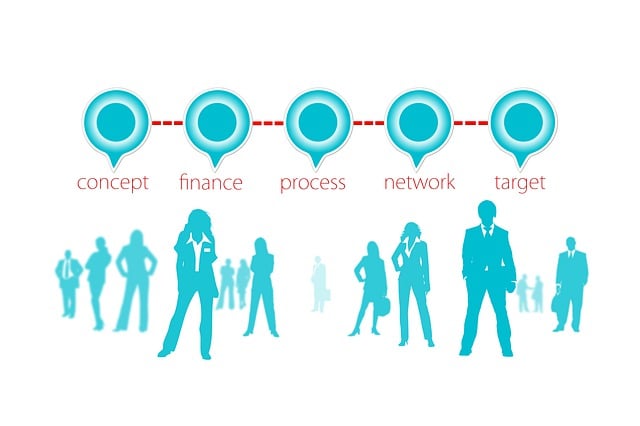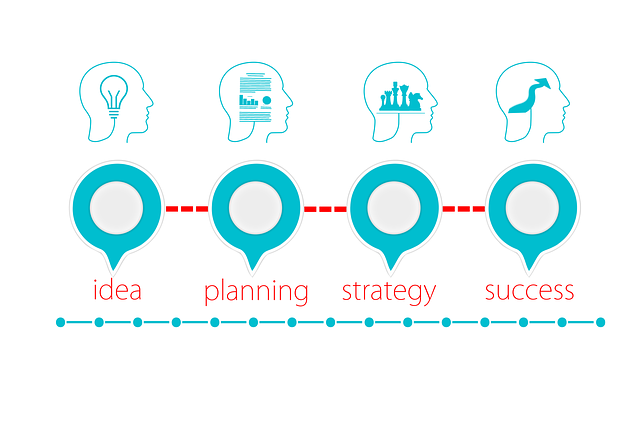Setting clear, SMART (Specific, Measurable, Achievable, Relevant, Time-bound) goals is crucial for success in the real estate industry. By breaking down primary objectives into smaller milestones and tracking Key Performance Indicators (KPIs), businesses can ensure their strategies remain effective and adaptable to market changes. Regular reviews enable data-driven decisions, proactive challenge management, and informed adjustments, ultimately driving growth and achieving or exceeding goals.
In the dynamic world of real estate, a clear vision backed by measurable milestones is essential for success. This article equips business owners with strategies to set ambitious yet achievable goals, define key performance indicators (KPIs), and track progress effectively. By implementing these steps, real estate professionals can navigate market fluctuations, stay focused, and ensure their ventures thrive. Discover how to transform your vision into a tangible roadmap with quantifiable success metrics tailored to the ever-evolving real estate landscape.
Setting Clear Goals for Your Real Estate Business

Setting clear and achievable goals is a cornerstone of any successful real estate business. It provides a roadmap for your team and ensures everyone is aligned with the company’s vision. Start by defining your overarching objective, whether it’s expanding into new markets, increasing sales volume, or diversifying your portfolio. Break this down into smaller, measurable milestones that act as stepping stones to your final goal. For instance, if your target is market expansion, milestones could include conducting market research, securing partnerships, and launching advertising campaigns in the chosen regions.
These goals should be Specific, Measurable, Achievable, Relevant, and Time-bound (SMART). A SMART goal for a real estate business might be to “Increase property listings by 20% within the next quarter.” This is specific, measurable, achievable through targeted marketing strategies, relevant to growing the business, and time-bound, creating a sense of urgency and focus. Regularly reviewing and adjusting these goals based on market trends and performance metrics will keep your real estate venture on track and thriving.
Defining Measurable Milestones and KPIs

Defining Measurable Milestones and KPIs in Real Estate involves setting clear, achievable goals that can be quantified and tracked over time. These milestones should be SMART—Specific, Measurable, Achievable, Relevant, and Time-bound. For instance, a development goal might be to “Increase property sales by 20% within the next fiscal year.” This is Specific, as it focuses on a particular aspect of business—sales. It’s Measurable through figures and data, achievable given strategic planning, relevant to overall growth targets, and time-bound with a clear deadline.
Key Performance Indicators (KPIs) are metrics that measure progress towards these milestones. In Real Estate, KPIs could include “Average sales price per property,” “Time from listing to sale,” or “Customer satisfaction ratings.” By aligning these KPIs with the defined milestones, real estate businesses can effectively monitor performance, make data-driven decisions, and ensure they’re on track to achieve their vision.
Tracking Progress and Adjusting Course as Needed

In the dynamic world of real estate, tracking progress and adjusting course as needed are vital components of a successful vision. Measuring milestones allows for a clear understanding of where an investment or development project stands against initial goals. By setting tangible benchmarks, stakeholders can gauge the pace of growth, identify areas of success, and pinpoint potential challenges early on. Regularly reviewing these metrics enables informed decisions that ensure the strategy remains on track.
Adjusting course becomes more manageable when progress is meticulously tracked. If certain milestones are not being met, it’s essential to reassess strategies and make necessary changes. This proactive approach can mitigate risks, optimize resources, and ultimately lead to achieving—or even exceeding—the outlined vision. In real estate, adaptability is key; staying agile allows for capitalizing on emerging opportunities while mitigating the impact of unforeseen market shifts or changing consumer preferences.






